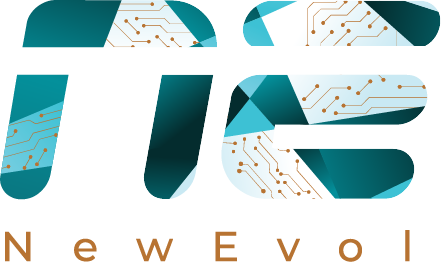What Is Cybersecurity Analytics? A Comprehensive Guide

With the ever-increasing sophistication of cyber threats, it’s becoming more critical than ever for organizations to adopt advanced methods to Identify threats. Traditional methods are no longer enough, and that’s where cyber analytics comes in. In this blog, we’ll discuss why traditional methods fall short and how cyber analytics platforms can help organizations stay ahead of potential risks.
What is cybersecurity analytics?
Cyber security analytics is a process that helps organizations effectively prevent, detect, and respond to cyber-attacks. It involves data collection and analyzing data from various sources, such as network logs, user activity logs, and security alerts, to identify patterns and anomalies.
The aim of cyber security analytics is to provide organizations with insights about their security posture and potential security risks. This helps them make informed decisions about how to protect their systems and cybersecurity data. To achieve this, cybersecurity analytics utilizes advanced data analytics techniques leveraging machine learning and data mining.
By leveraging the power of cyber security analytics, organizations can scale their ability to detect and respond to cyber threats. This reduces the risk of data breaches and protects their reputation and bottom line. It’s a crucial process that helps organizations stay ahead of cybercriminals and safeguard their critical assets.
SIEM vs Cybersecurity analytics
| Feature/Aspect | SIEM | Cyber Security Analytics |
| Purpose | Centralized log management and event correlation for real-time monitoring and incident response. | Uses advanced analytics to detect, analyze, and respond to threats, focusing on broader data sources and patterns. |
| Data Sources | Aggregates and correlates logs from IT systems, security devices, and applications (e.g., firewall logs, system logs). | Utilizes diverse data sources including logs, network traffic, endpoints, threat intelligence, and behavioral data. |
| Focus | Emphasizes on real-time monitoring, alerting, and automated response to security events based on predefined rules and signatures. | Analyzes historical and real-time data to identify trends, anomalies, and potential threats using machine learning and AI techniques. |
| Deployment | Typically deployed on-premises or in cloud environments, integrating with existing security infrastructure. | Can be deployed on-premises, in the cloud, or offered as a managed service, scalable to handle large volumes of data and diverse analytics needs. |
What is the need of analytics in cyber security?
Transitioning from Protection to Detection

It’s a good thing to invest in advanced systems like IDS, IPS & SIEM for real-time threat response, as it has become vital for businesses to transition from traditional protection measures to proactive detection. One can identify anomalies, by using Behavioral analytics and EDR solutions, helping in Proactive risk mitigation, and enabling Organizations cyberthreats before they escalate.
A Unified View of the Enterprise
Are you Looking for an effective management of cybersecurity? It is crucial to have a unified view of security!
Ensure to use integration tools like Security information and event management to get a centralized view of events, which will help you streamline management across domains that could include networks, cloud, applications & last but not least endpoint. When combining it with additional risk-based security management, you can get holistic insights, helping you make informed decisions and proactively mitigate risks.
Seeing Results and an ROI
Demonstrating tangible results and return on investments from the cybersecurity initiatives by defining and tracking major KPIs like MTTD & MTTR.
Conduct business impact analyses as and when required to assess the financial and operational ramifications of security incidents. In addition, make it a habit of fostering a culture of continuous improvement by using the lessons learned to refine processes & technologies, enhancing the maturity and adaptability of cybersecurity.
Cybersecurity analytics benefits
Prioritized alerts

Taking risk and impact into consideration, it can prioritize alerts, helping cybersecurity teams focus on critical threats first and helping in the optimization of resource allocation and response efficiency.
Automated threat intelligence
Used in the automation of procedures such as collection, analysis, and dissemination of threat intelligence. Due to this, cybersecurity teams can identify emerging threats faster and take proactive defensive measures.
Proactive incident detection
Can help in the real-time analysis of a security incident by identifying the pattern and anomaly in network traffic, user behavior, and system logs, which is very useful in identifying threats before their escalation.
Improved forensic incident investigation
Useful in providing in-depth information, including origin and impact, that can help in faster and more accurate forensic investigations, which is crucial in understanding and mitigating future risks.
Response times
Helpful in reducing response times, which mitigates security breaches & restores normal operations swiftly.
Regulatory compliance
Helps an organization meet regulatory requirements, providing continuous security monitoring, audit trails, and the documentation of security measures to adhere to data protection laws and industry standards.
Common security threats today
1. Social engineering

Includes techniques like phishing, baiting, and pretexting to entice individuals to compromise their security & confidential information.
2. Malicious insiders
Done intentionally by individuals working in an organization with the motive of exploiting vulnerabilities or stealing sensitive data.
3. APTs and advanced malware
Also known as Advanced Persistent Threats, these are targeted attacks done especially to gain persistent access to a network or system & on the other hand, advanced malware is software designed to evade traditional security measures.
4. Distributed Denial of Service Attacks (DDoS)
Technique to overload a website, network, or system with excessive traffic, so that it becomes unavailable to legitimate users.
5. Unpatched vulnerabilities
A weakness in software or security systems exploited by cyberattackers if not updated with the latest patches or fixes.
6. Compromised and weak credentials
Using stolen credentials like passwords, and access codes to get unauthorized access to users’ accounts.
7. IoT attacks
Done to target Internet of Things devices as they are less secure compared to traditional computers to gain access to networks or compromise user privacy.
Cyber Analytics Most Common Use Cases
1. Helping the security team identify traffic patterns that may indicate attacks.
2. Monitor user behaviors
3. Detect threats
4. Identifying attempts of data exfiltration
5. Monitoring activities of remote and internal employees
6. Identifying insider threats
7. Detecting compromised user accounts
8. Demonstrating compliance with standards including HIPAA (Health Insurance Portability and Accountability Act) & PCI DSS (the Payment Card Industry Data Security Standard)
9. Investigating incidents
10. Detecting improper usage of user accounts
Types of cybersecurity analytics tools
– External threat intelligence
– Network analysis and visibility (NAV)
– UEBA (User and Entity Behavior Analytics)
– Network Traffic Analysis
– Endpoint Detection and Response (EDR)
– Data Loss Prevention (DLP)
– Cloud Security Posture Management (CSPM)
– Security Information and Event management
– Security orchestration automation and response
Threat Detection and Response Methods without Cyber Analytics
- Signature-based Detection
- Log Analysis
- Intrusion Detection Systems (IDS)
- Manual Incident Response
- Reactive Incident Response
Signature-based Detection: Traditional methods often rely on signature-based detection, which matches known signatures or patterns of malicious code. However, this approach is limited to detecting known threats and may struggle with zero-day attacks or sophisticated malware.
Log Analysis: Organizations can manually analyze logs and event data to identify potential security incidents. However, this method is time-consuming, and it may be challenging to detect subtle or complex threats buried within the vast amount of log data.
Intrusion Detection Systems (IDS): IDS monitors network traffic for known attack signatures or patterns. While IDS can detect predefined threats, it may miss emerging or customized attacks that do not match the preconfigured signatures.
Manual Incident Response: Without cybersecurity analytics, organizations rely on manual investigation and response processes. This approach can be slow and resource-intensive, leading to delays in detecting and responding to threats effectively.
Reactive Incident Response: Traditional methods often result in a reactive approach, where incidents are addressed after they occur. This reactive stance may lead to prolonged dwell time, giving attackers more time to compromise systems and exfiltrate data.
Threat Detection and Response with Cyber Analytics
Comprehensive Data Analysis: Cybersecurity analytics platform enables organizations to analyze large volumes of diverse data from multiple sources, providing a holistic view of the threat landscape. This allows for the identification of patterns, anomalies, and indicators of compromise that may go unnoticed by traditional methods.
Real-time Monitoring and Alerting: our security analytics platform, allows for the detection of threats as they occur. Automated alerting ensures that security teams receive immediate notifications, enabling prompt response and mitigation actions.
Behavioral Analytics: By leveraging machine learning algorithms, cyber analytics can establish baselines for normal user and system behavior. This allows for the detection of deviations and anomalous activities, providing early warning signs of potential threats.
Advanced Threat Detection: Cybersecurity analytics employs advanced techniques such as machine learning, statistical analysis, and anomaly detection to identify emerging threats and zero-day attacks. This proactive approach enhances the organization’s ability to detect and mitigate risks effectively.
It’s important to note that while traditional methods can provide some level of threat detection and response, they may lack the scalability, speed, and accuracy that cyber analytics offers. By leveraging advanced analytics techniques, organizations can significantly enhance their ability to detect, respond, and mitigate threats in a proactive and efficient manner.
How can NewEvol help you?
NewEvol can significantly enhance your network security defenses with the help of its security analytics platform.
The Features of our platform include Descriptive Analytics, Diagnostic Analytics, and, last but not least, Predictive Analytics to help you proactively identify and reduce threats.
So are you Ready to detect potential evolving threats, improve the security posture, and safeguard your company from the ever-evolving cyber threats?
Get our security analytics platform today!

